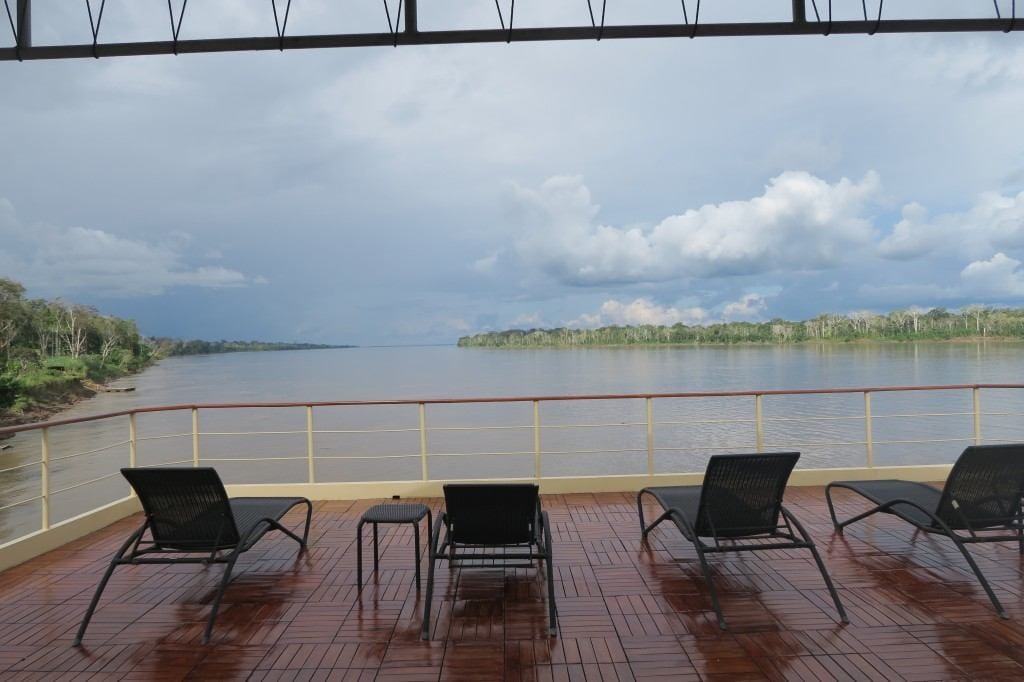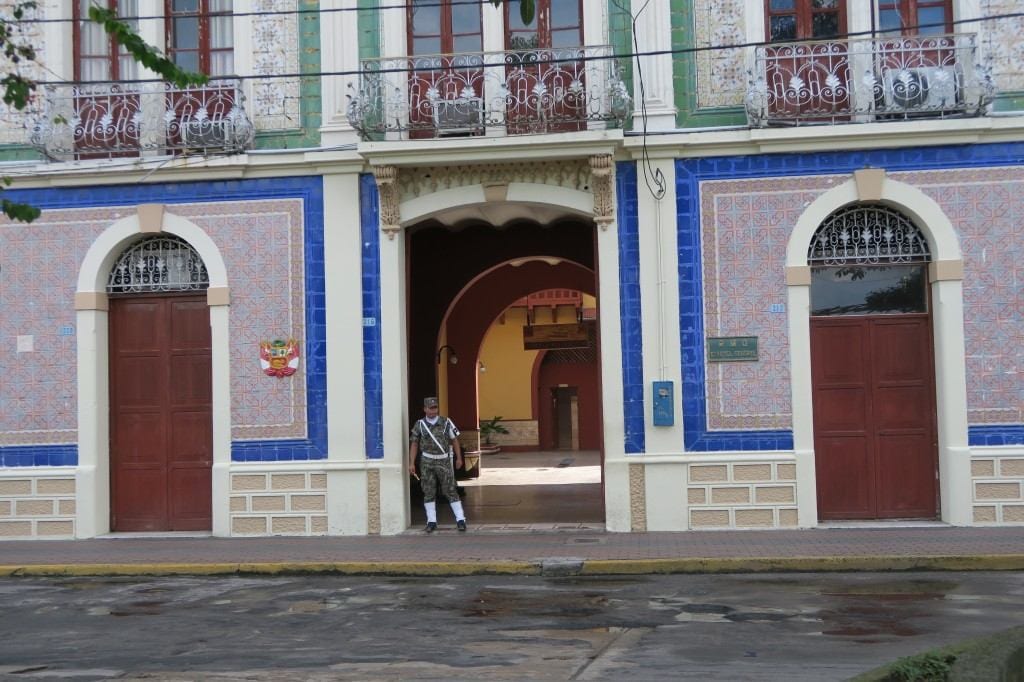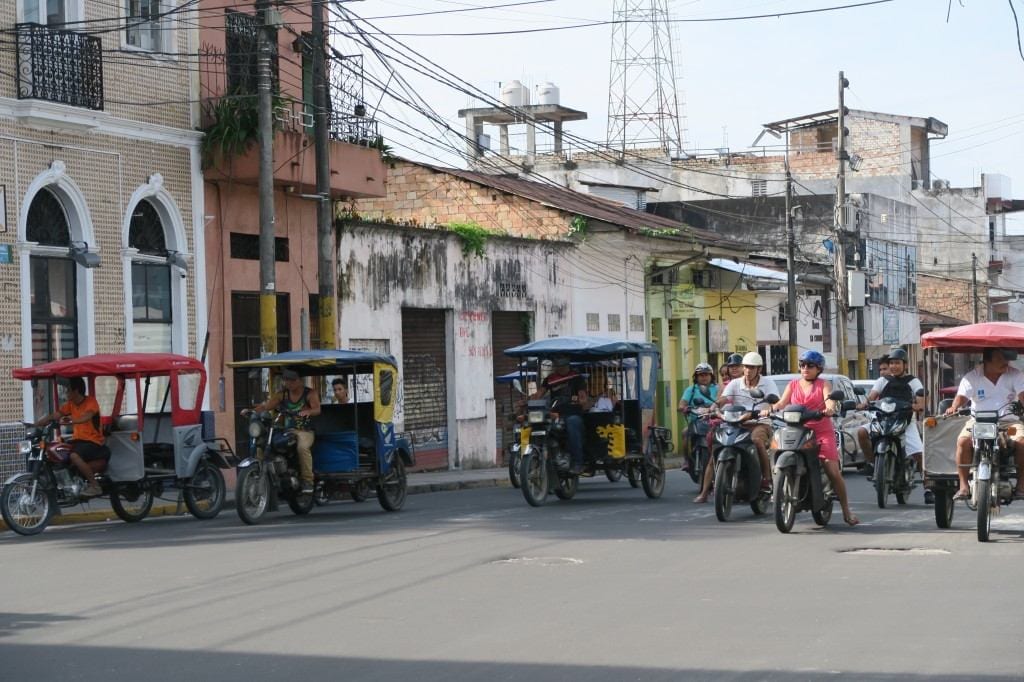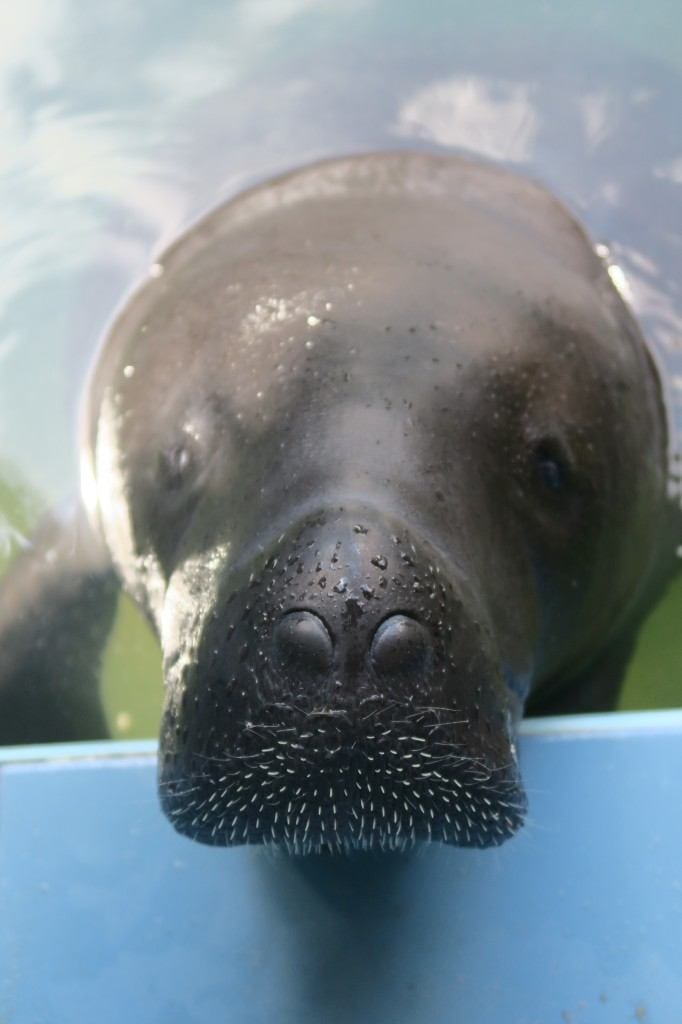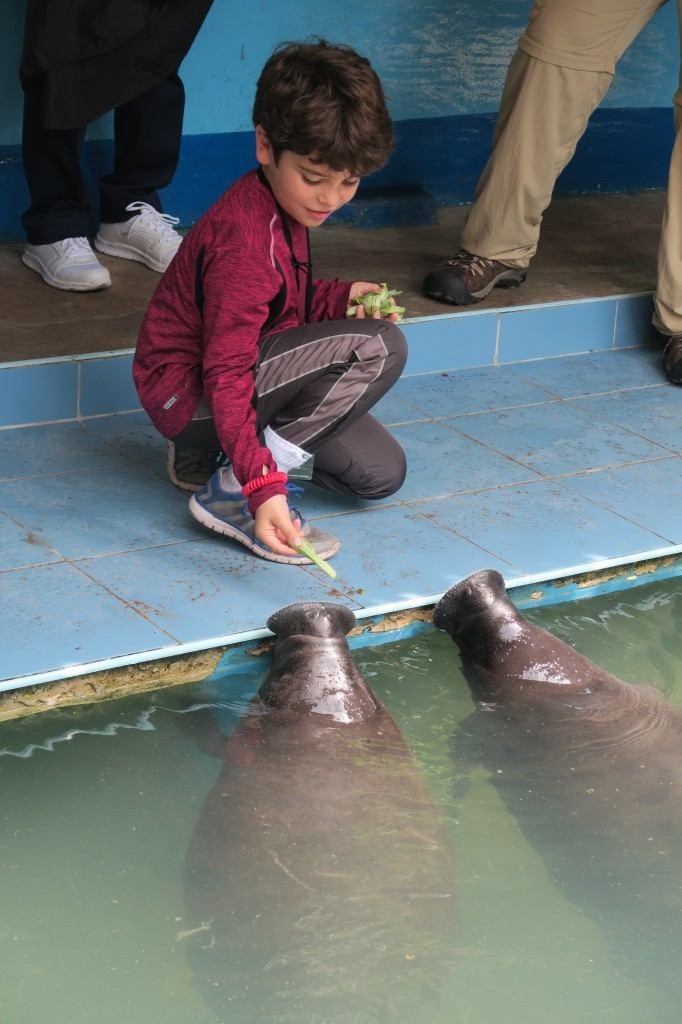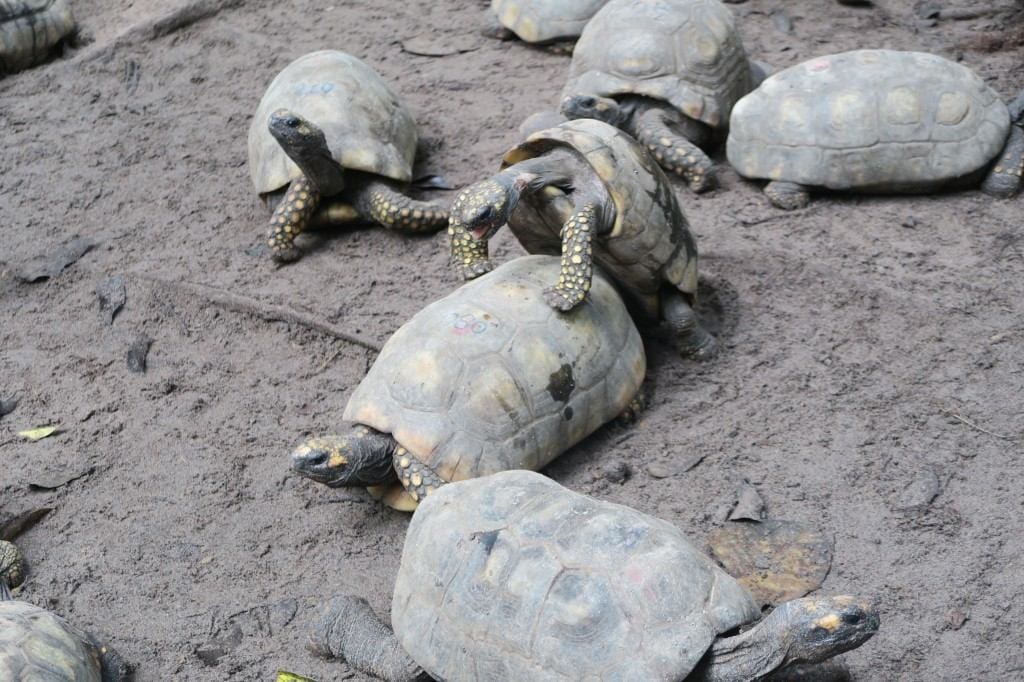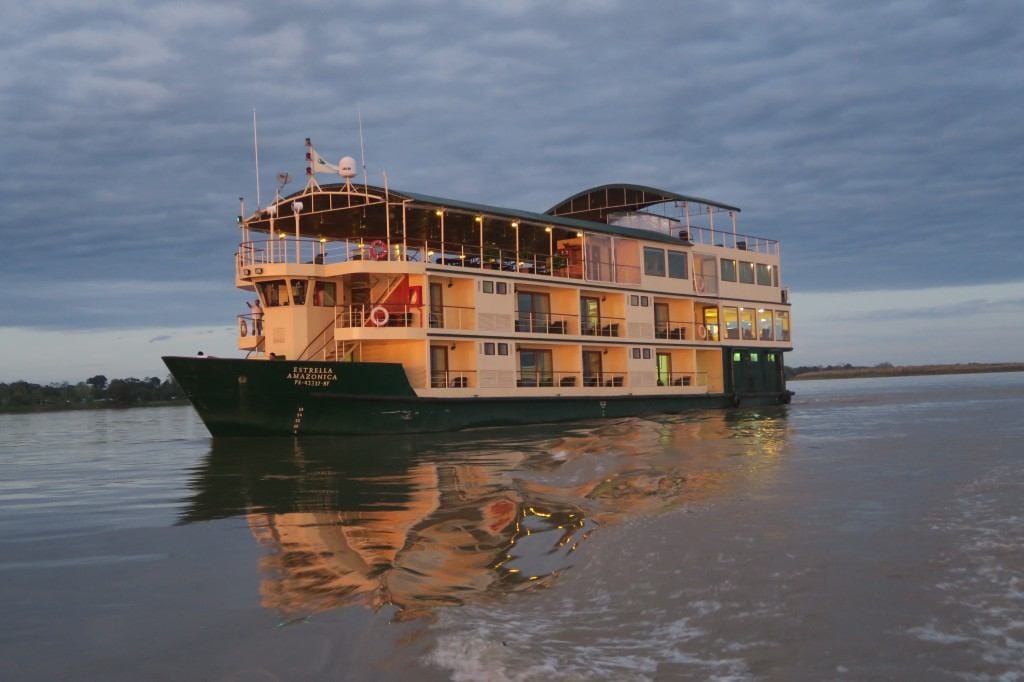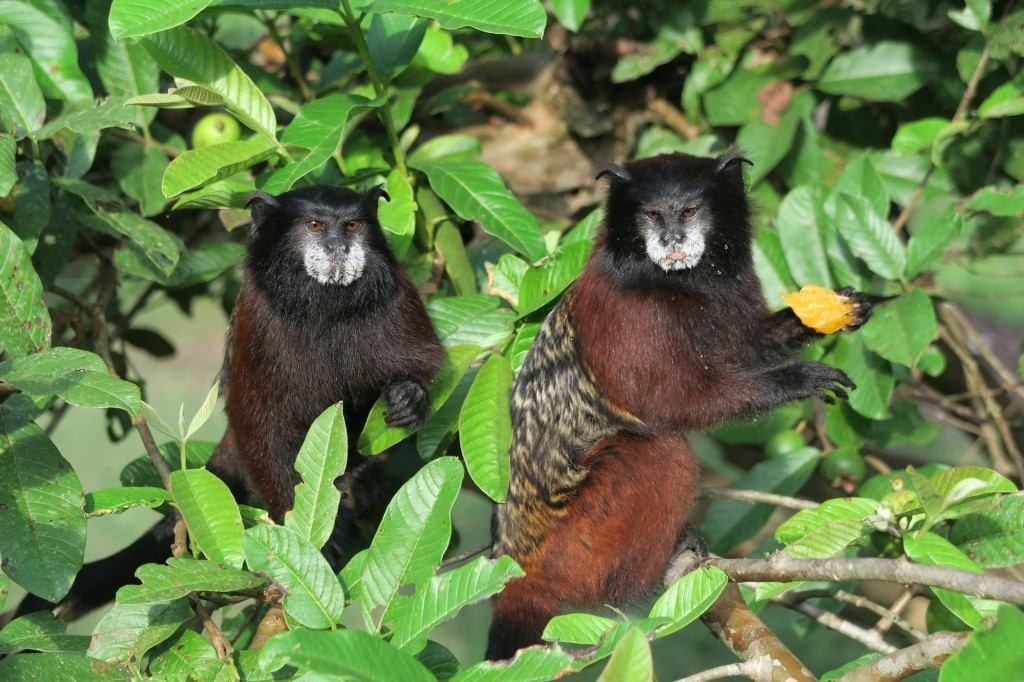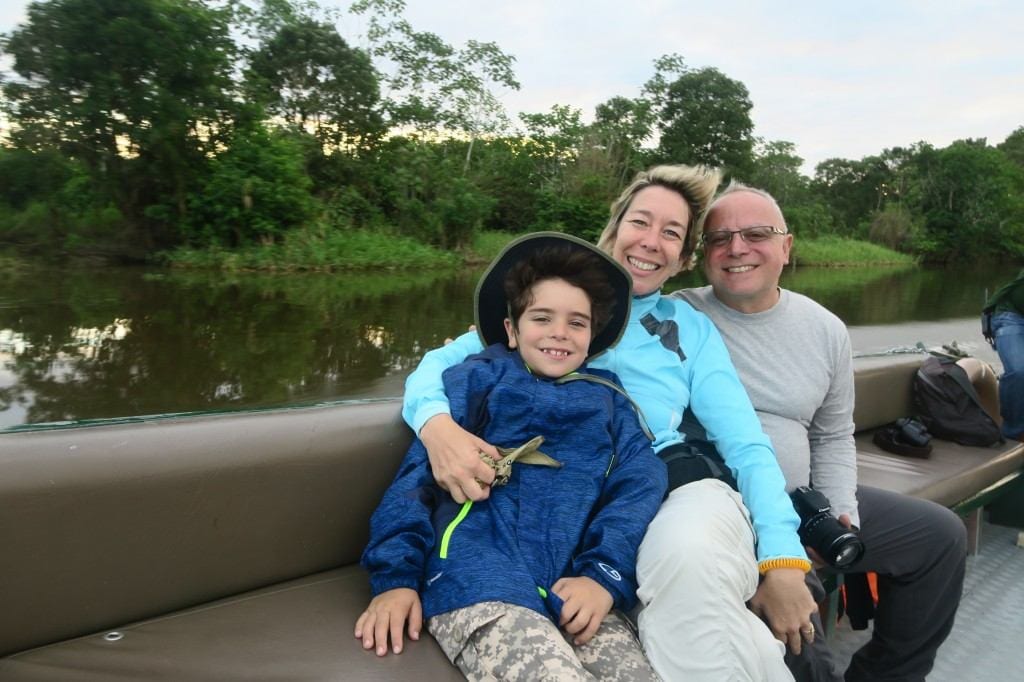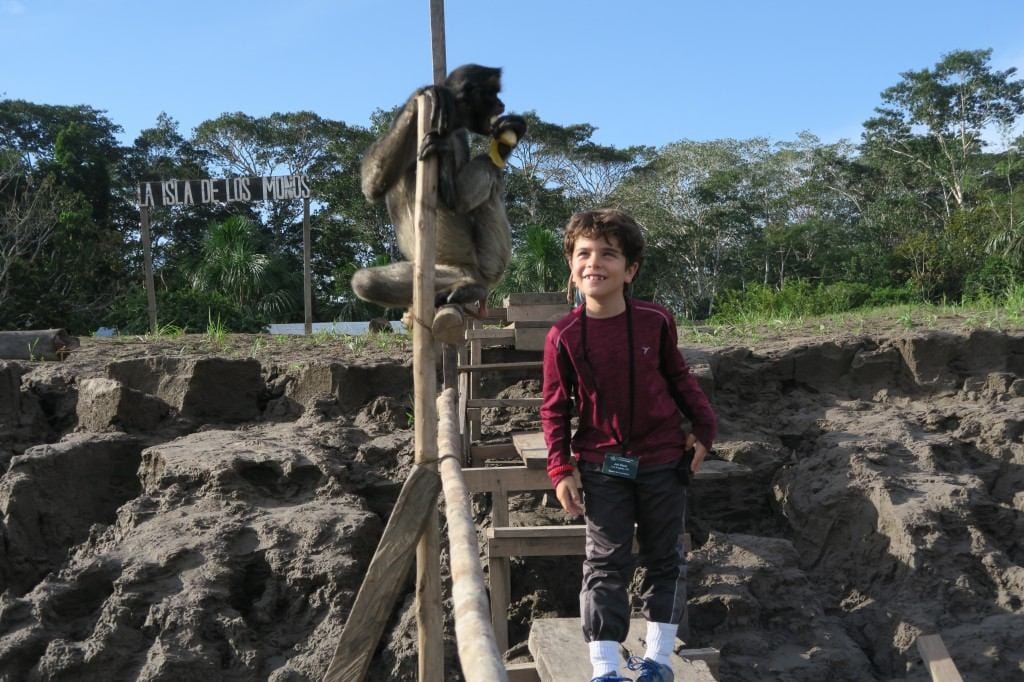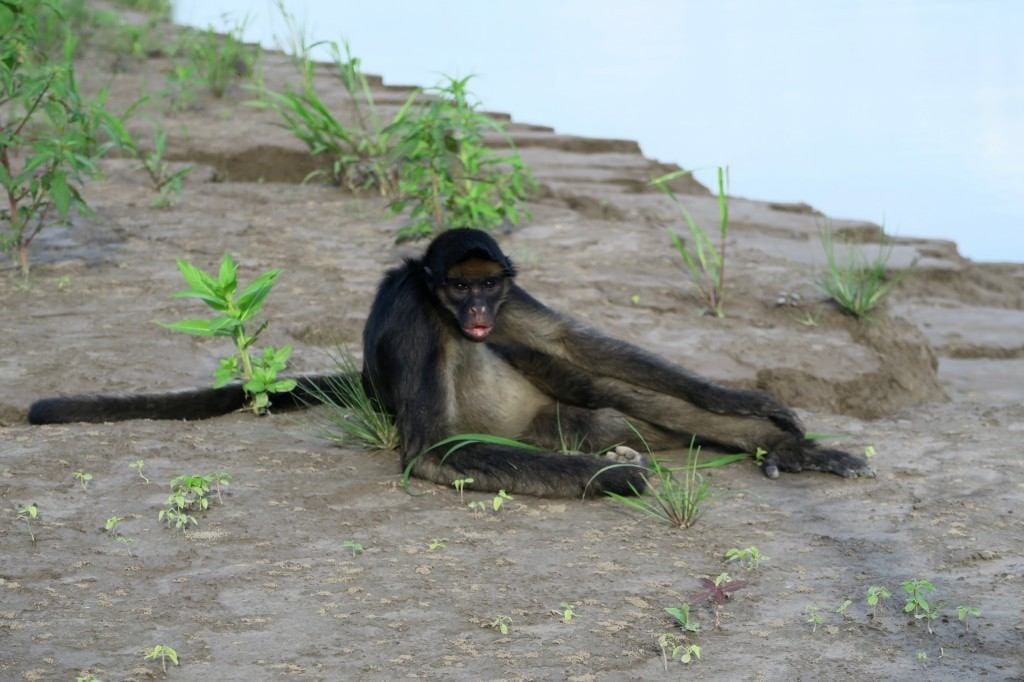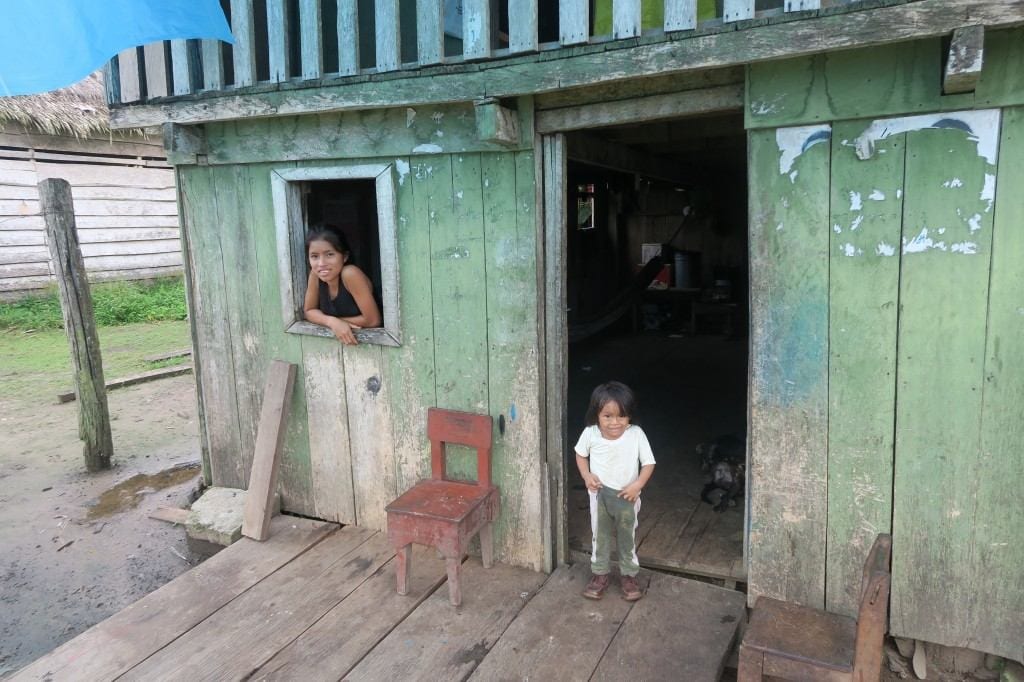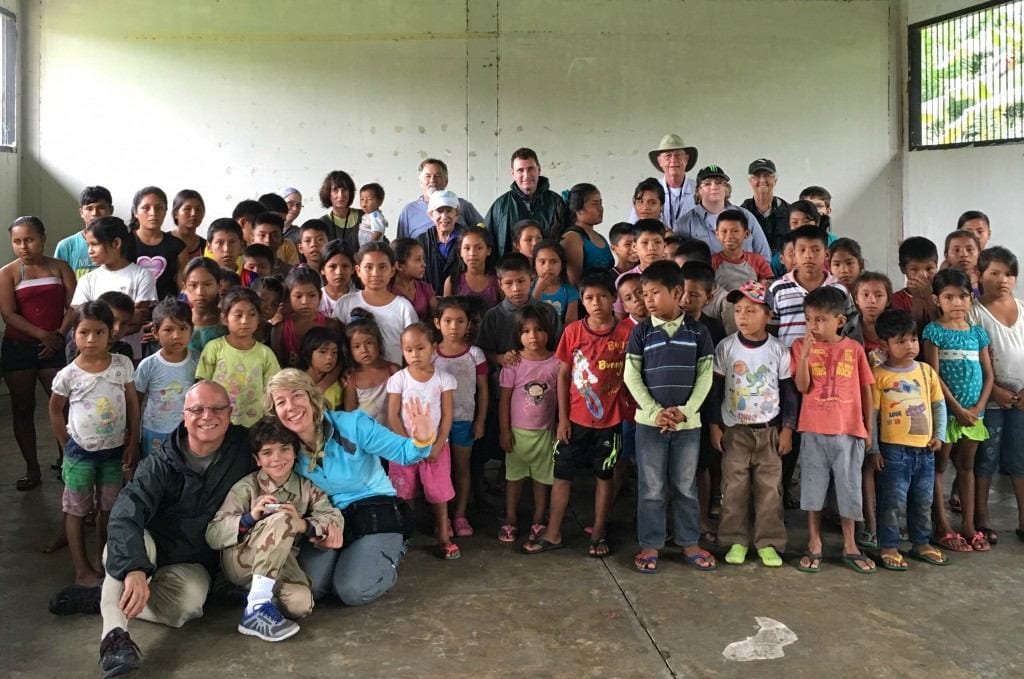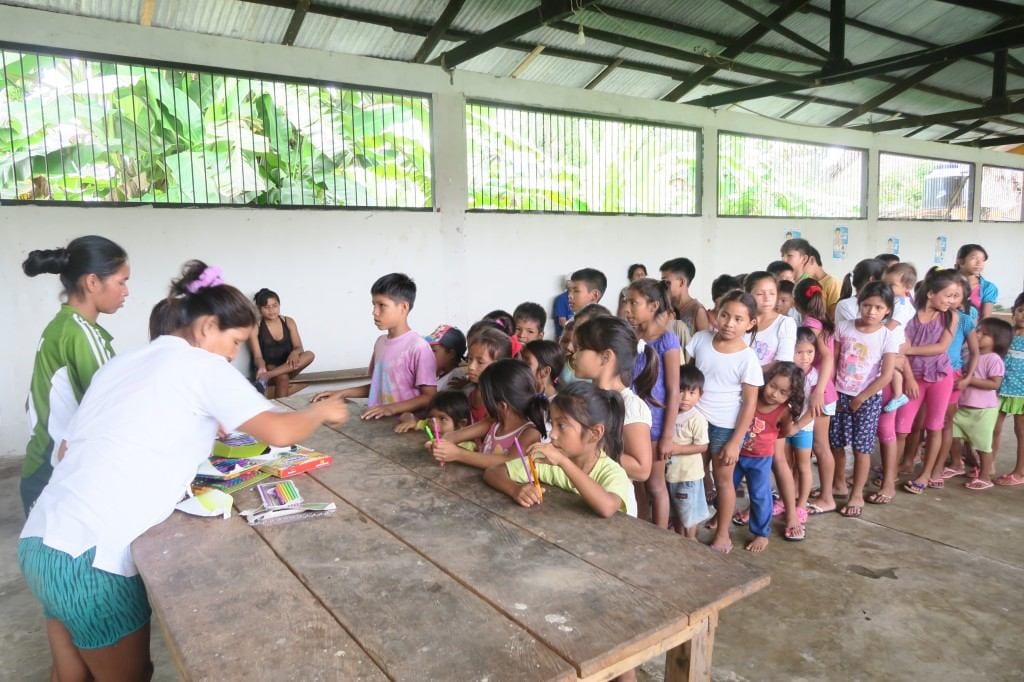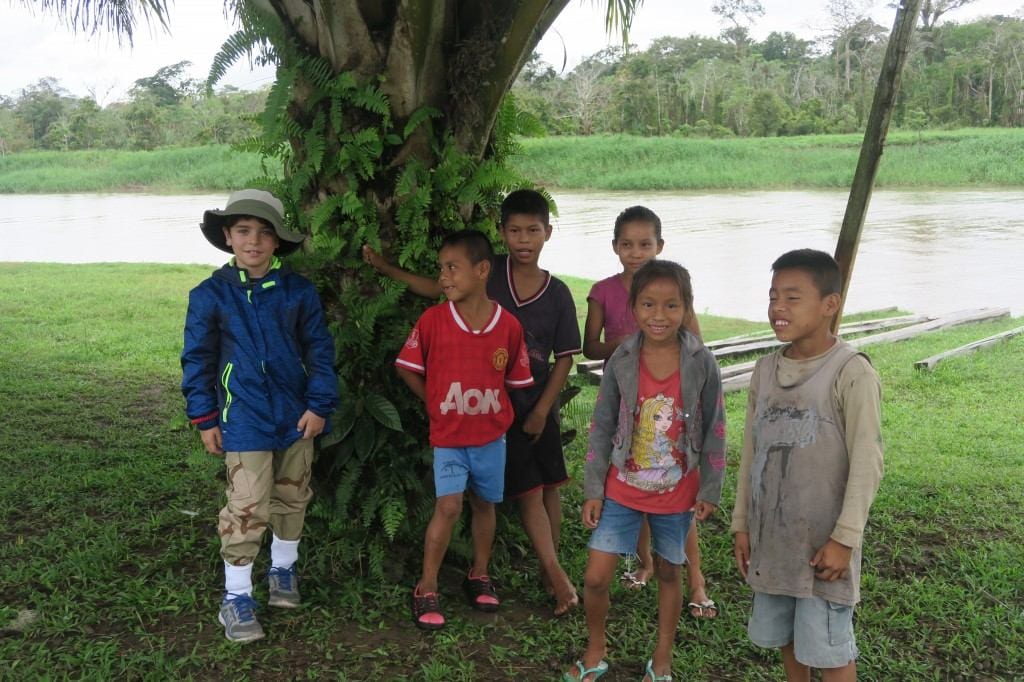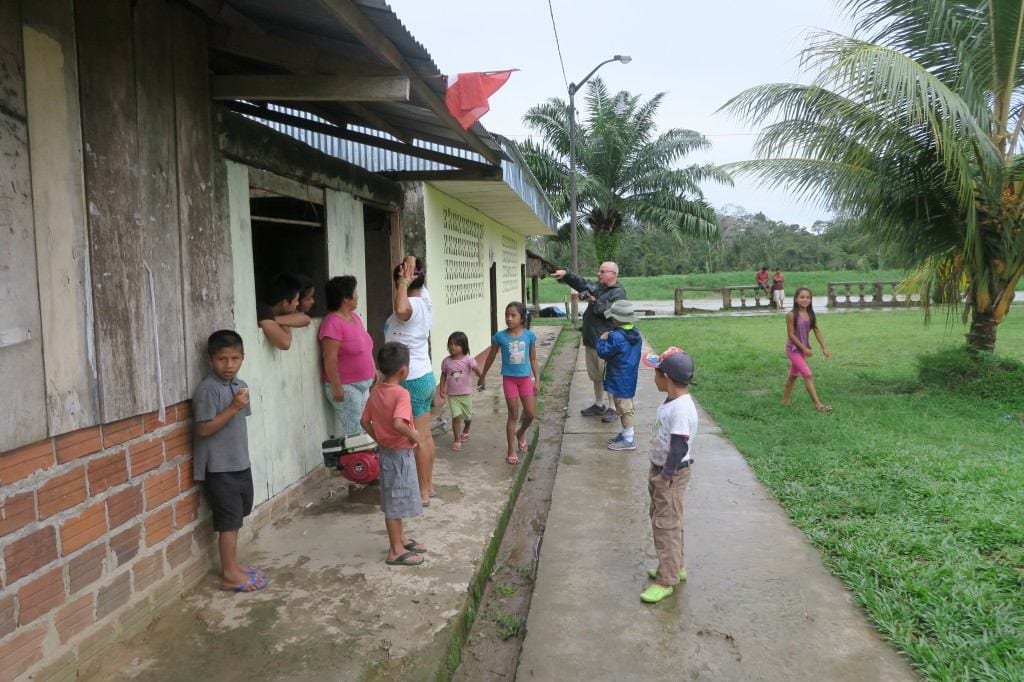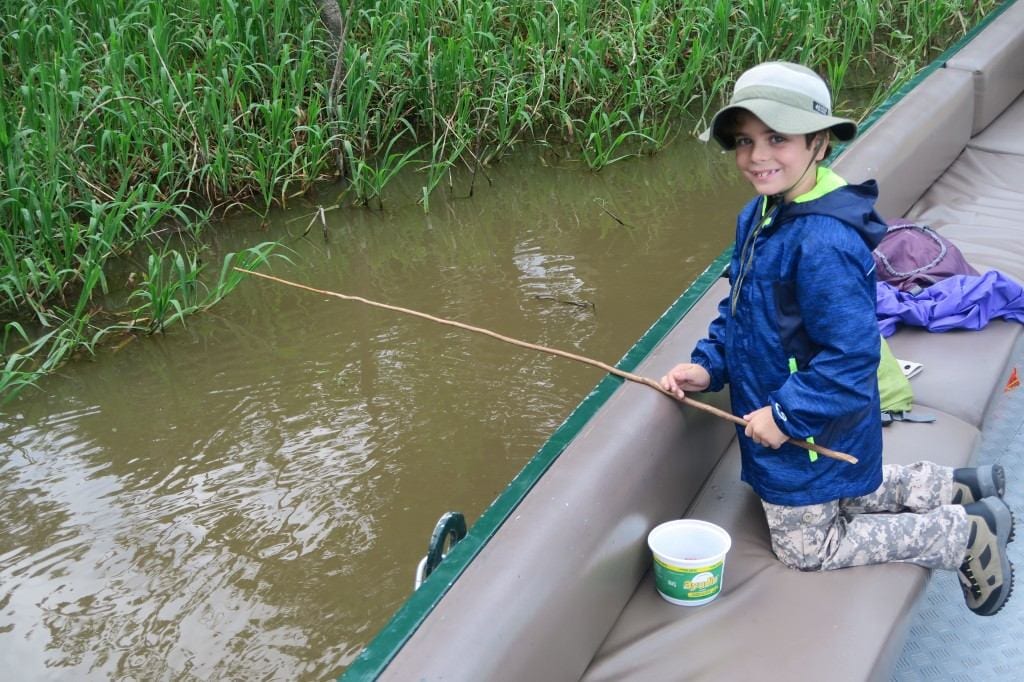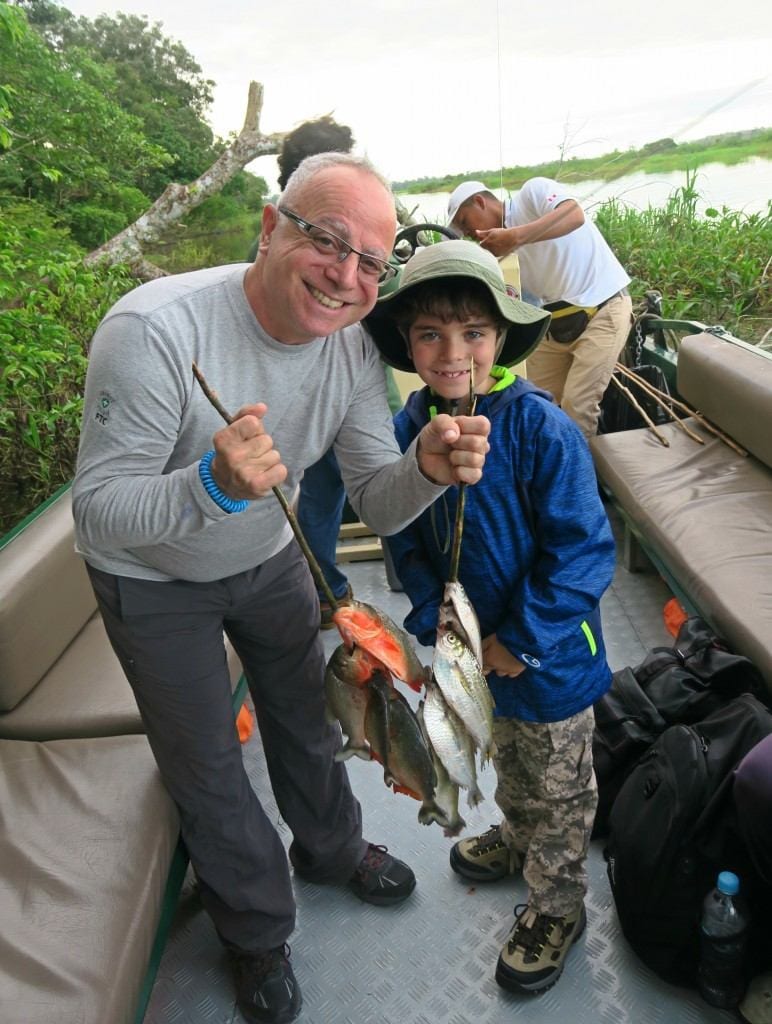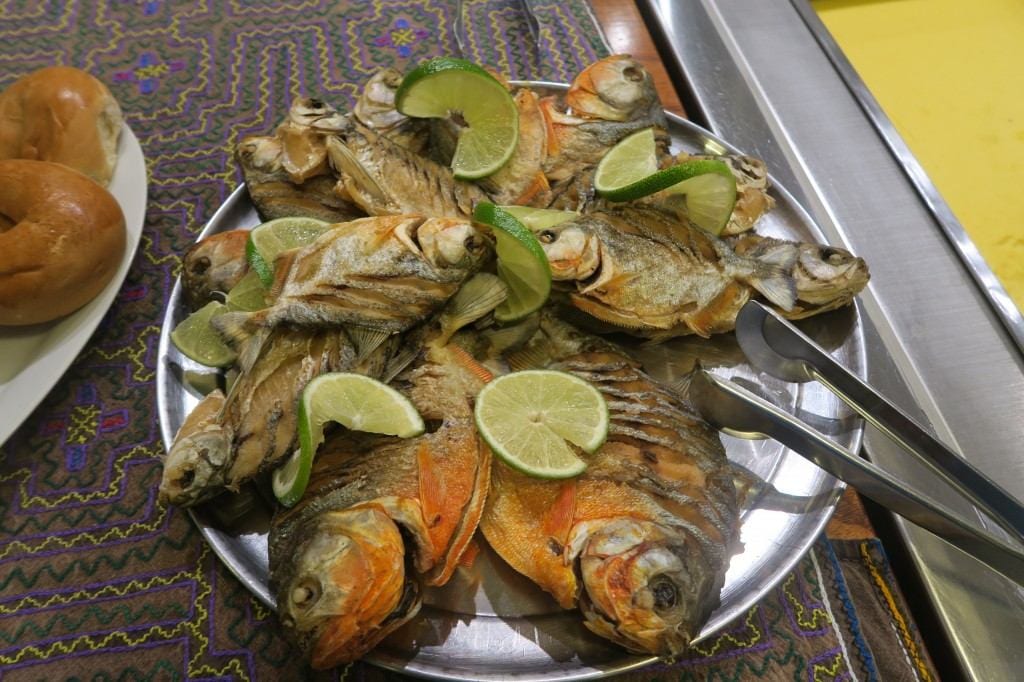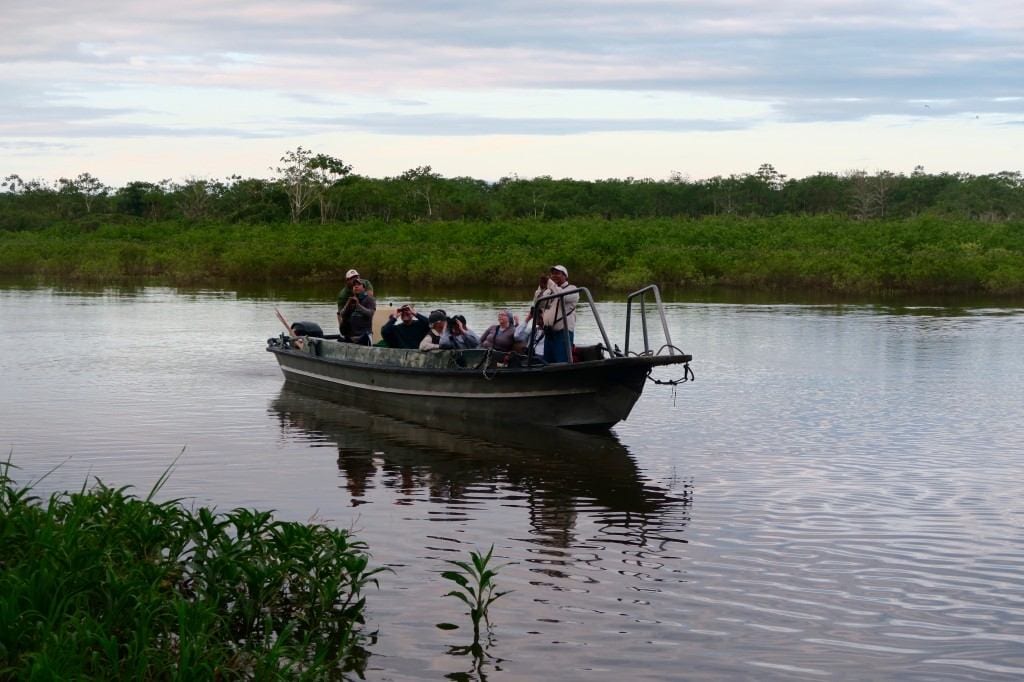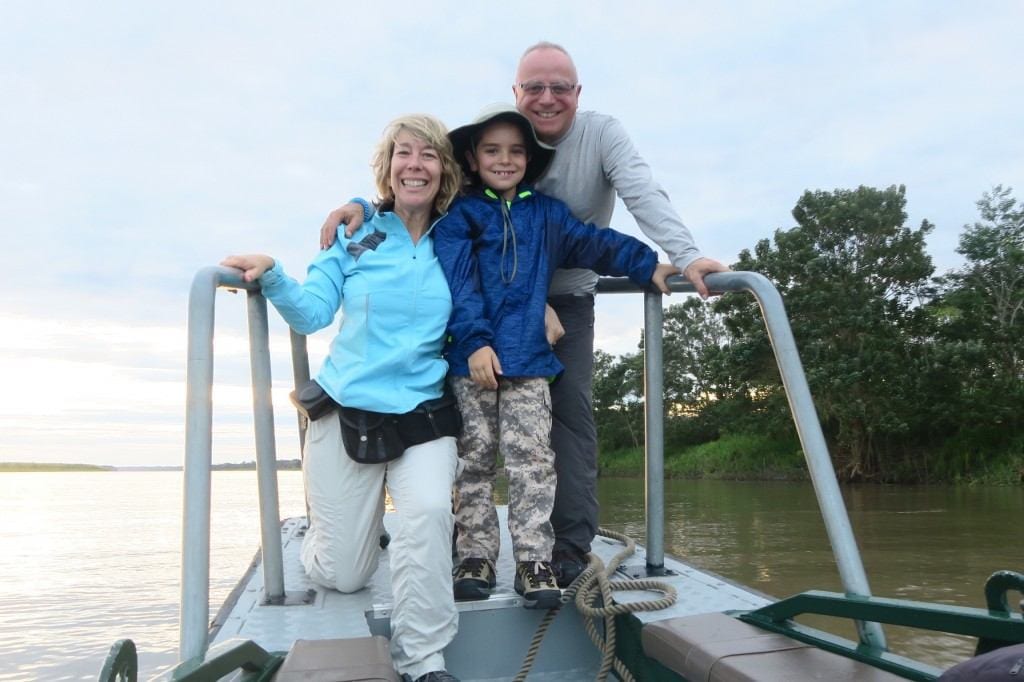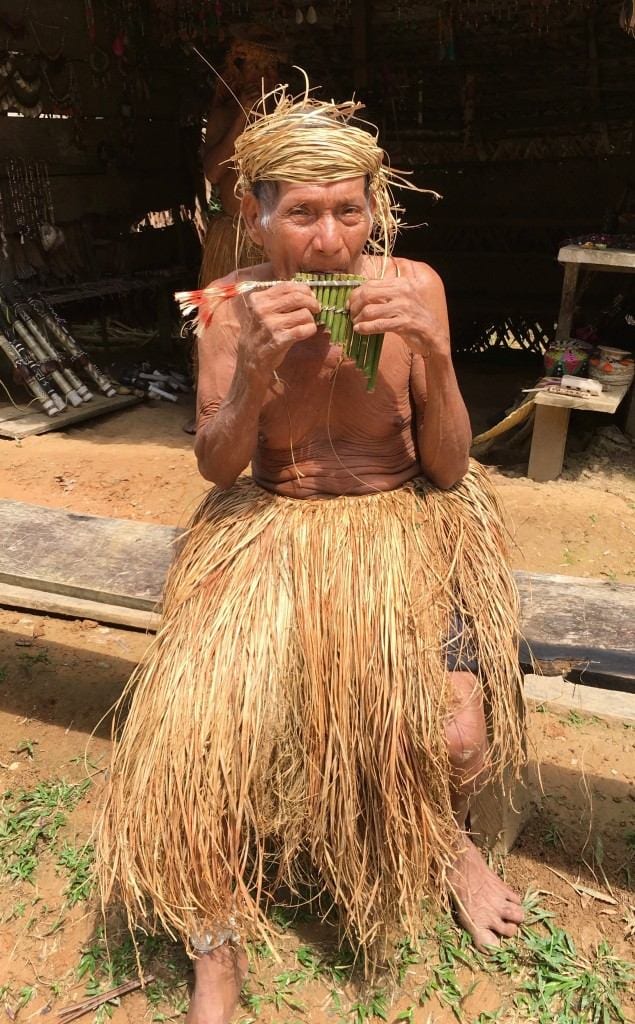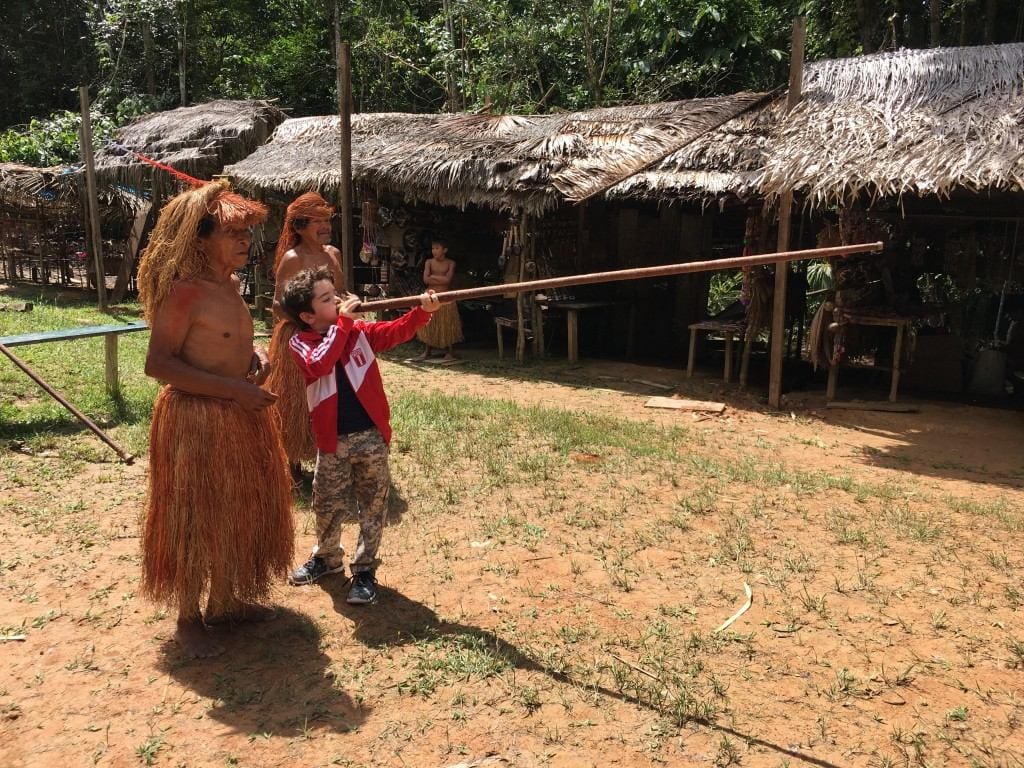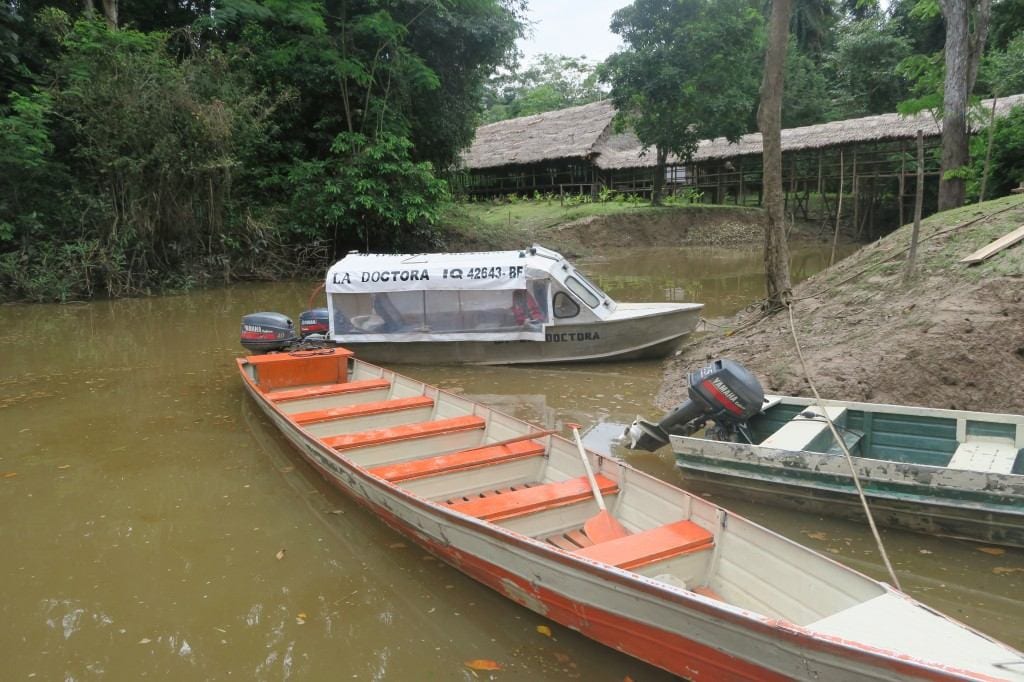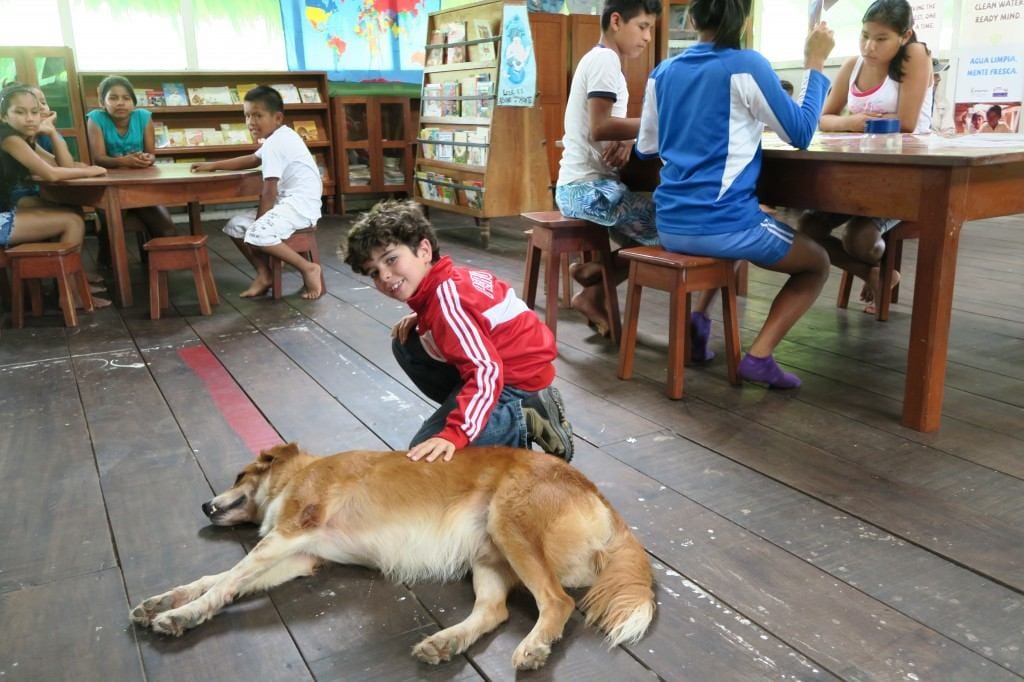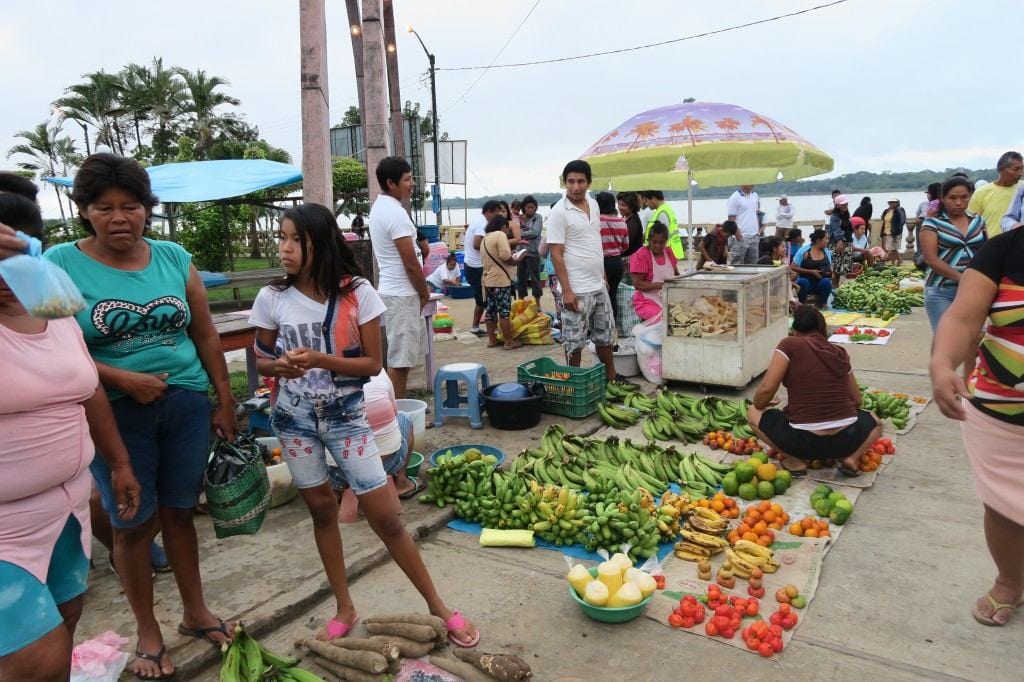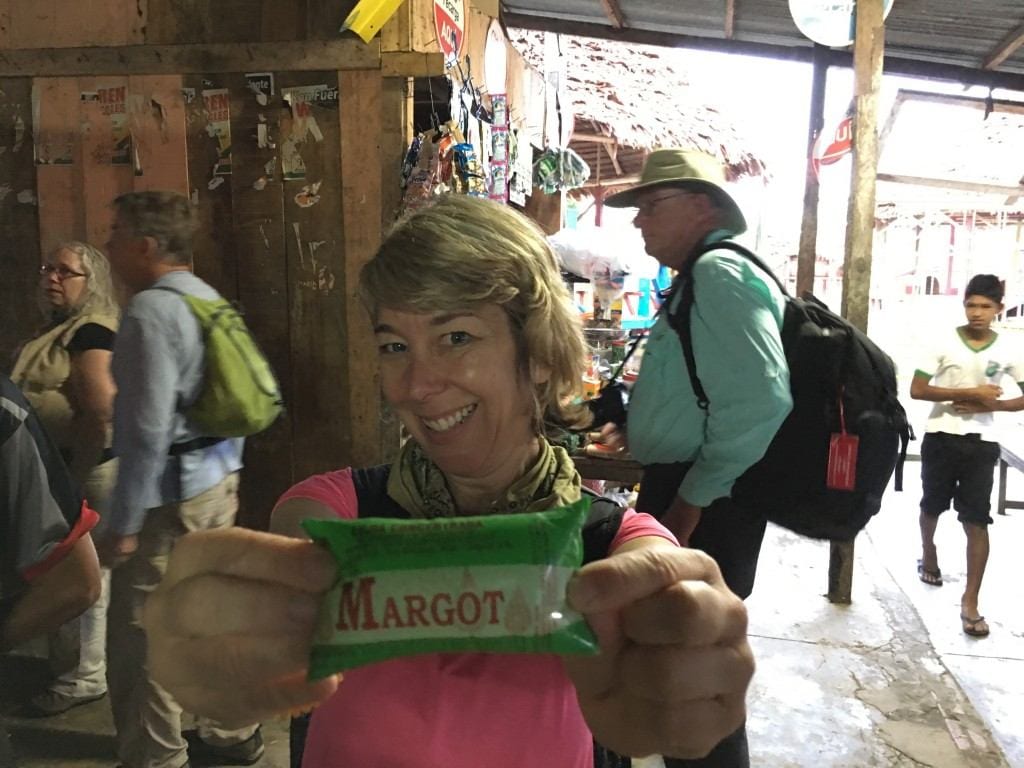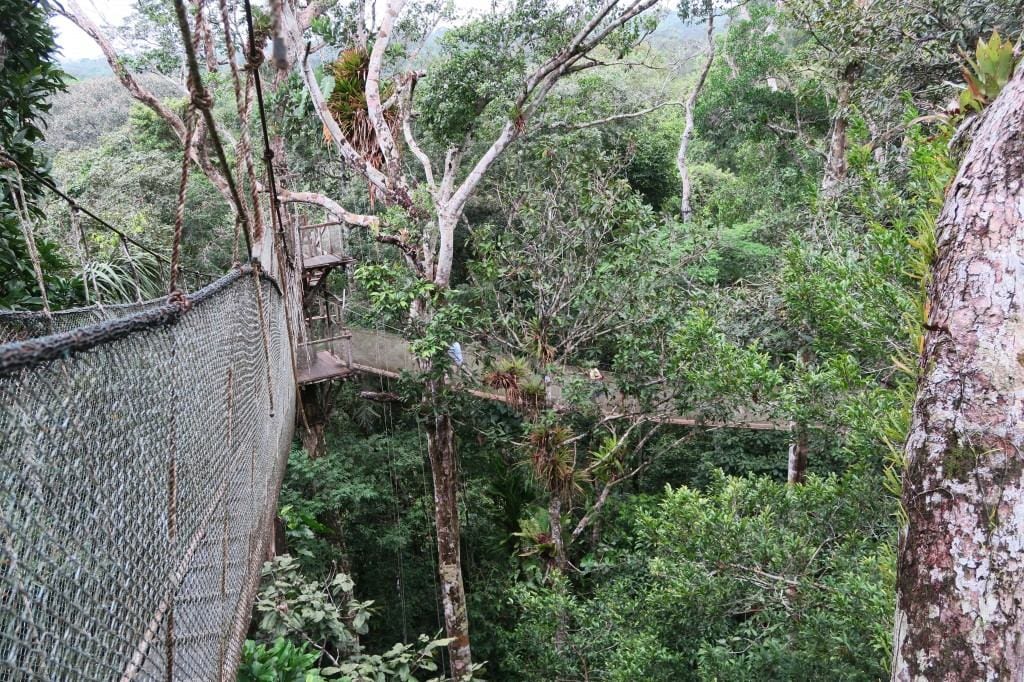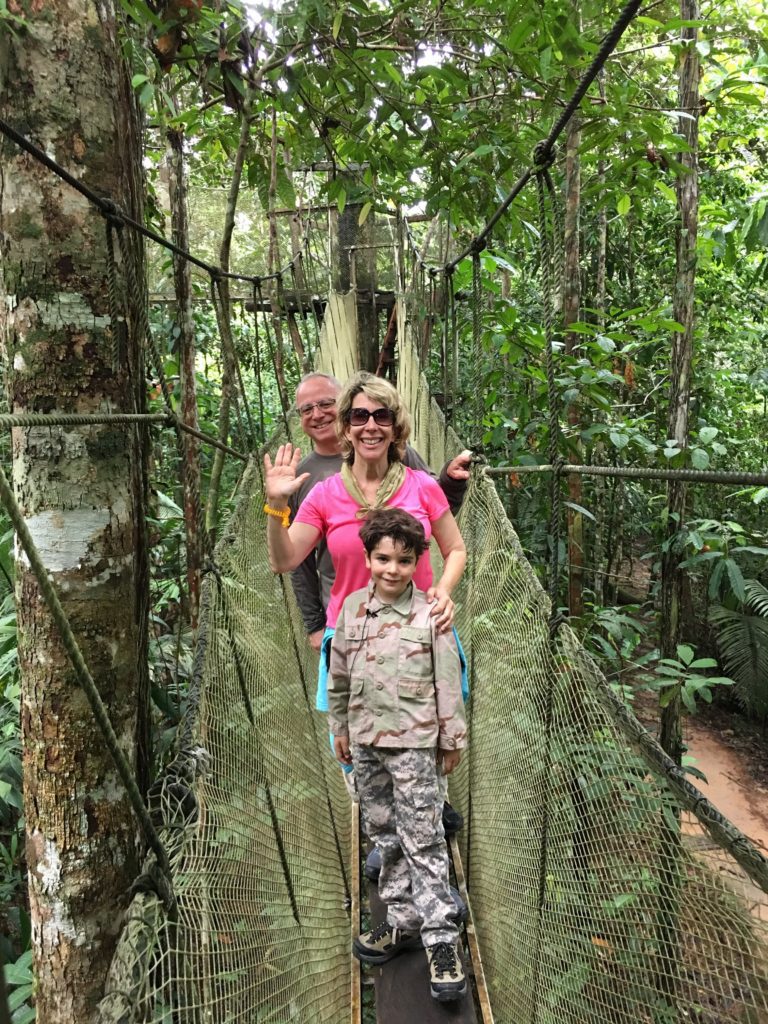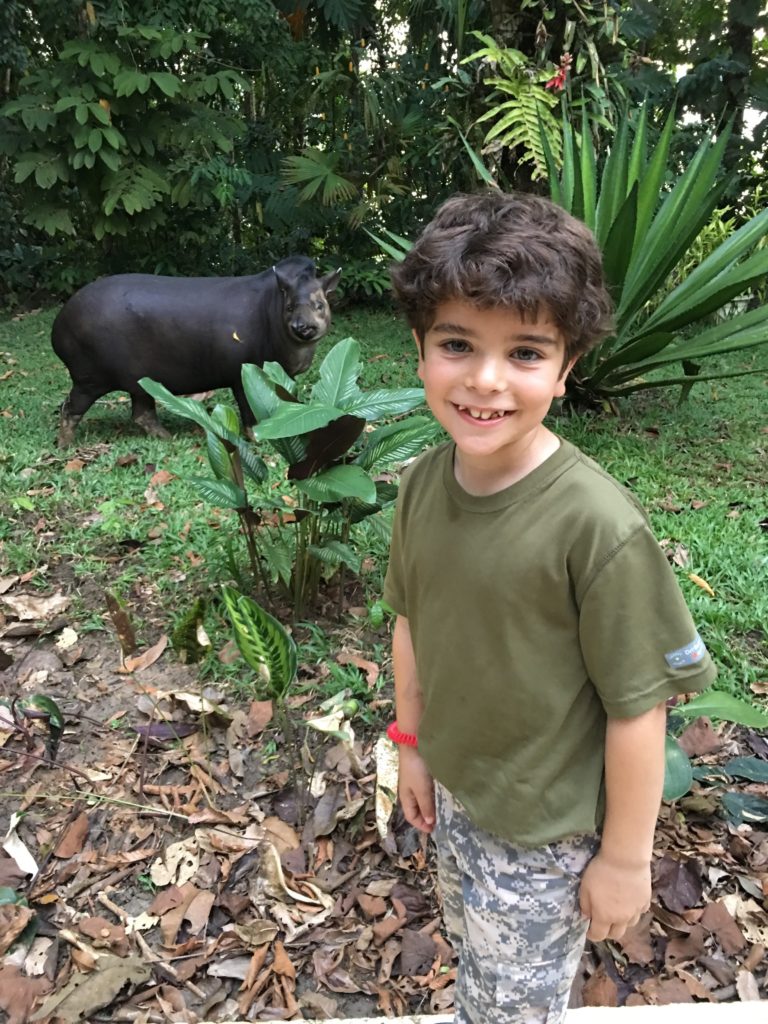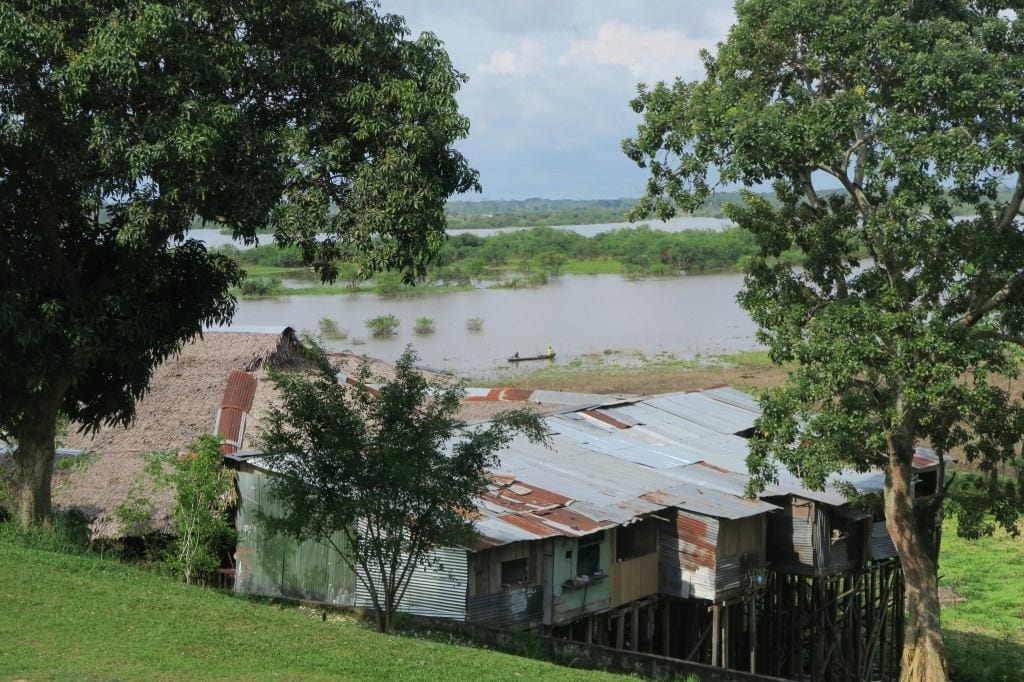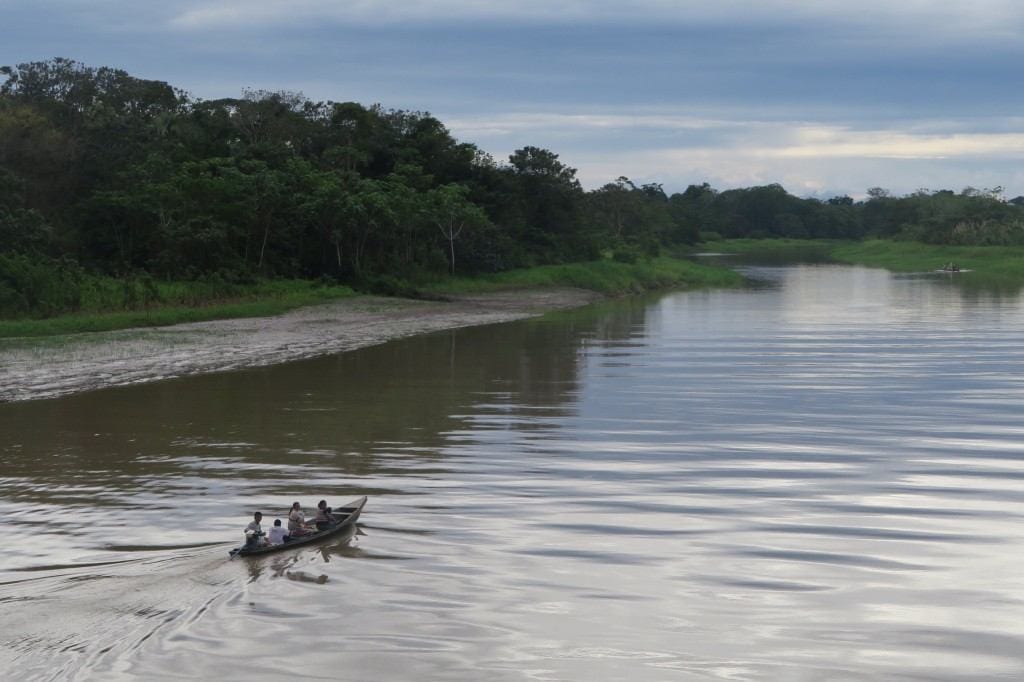Travel Tips
Exploration & Education on the Amazon River in Peru
The Amazon River might not be the first family-friendly destination that comes to mind. In an effort to teach her son about the world around him, contributing family travel writer Margot Black traveled there with her family. While on an intimate river cruise, they visited local villages, a school, a medical center, markets, animal preserves, and even went piranha fishing. Keep reading to find out how they explored the breadth of the Amazon River in Peru—and how it impacted her son.
Any trip to the Amazon, the beautiful 4,400-mile river that mainly flows through Brazil, Colombia, and Peru, needs to be planned and prepared for with meticulous attention to detail. My family is my world. With a nature-busting trip of a lifetime, I knew I had to leave it to the professionals, and closely followed their advice. I chose International Expeditions, which has been hosting Amazon river cruises for 36 years, to keep my family safe and entertained. They delivered.
Our discovery vacation consisted of a five-night stay on the Amazon, including three nights on IE’s own boat La Estrella, with excursions to local villages, schools, and markets. There was bird watching and stargazing as well.
An important part of the fabric of this trip was the emphasis on exploration with education, and because of that, we were asked to bring clothes and books for local children. We loved being able to contribute to the Amazon community, and I wish we had been able to donate more.
Iquitos: Gateway to the Amazon
Iquitos is a Peruvian city port and the gateway to the Amazon. With a population of just under half a million, it’s the largest city in the world that is completely inaccessible by road.
It’s located in the Amazon basin where the Nanay and Itaya rivers meet, about 2,300 miles upstream from the Atlantic Ocean and approximately 600 miles northeast of Lima. The only way to reach Iquitos is to fly there or travel by boat, which takes a full week.
We flew into Iquitos knowing this was going to be a learning trip from start to finish. The town’s history is fascinating. Some historians believe that it was founded by the Jesuit missionaries in the 18th century, but it really only became a populated hub at the beginning of the 19th century when rubber was discovered.
Once the car industry boomed, so did the demand for Iquitos’ rubber, and the city enjoyed a period of great wealth. However, after production dropped off around 1912, the city went into a decline. Some landmarks remain from its industrial age, including the Iron Building, a structure designed by Gustave Eiffel (of the Parisian tower) in the late 19th century.
The transport of choice is now either motorcycle or Tuk-Tuk, a rickshaw with a small engine. The place sounds like a mosquito attack—the buzzing is constant and it seems as if everyone owns one.
Our first trip was to a Manatee Research Center, which is located 30 minutes outside of Iquitos. The center is fantastic and the staff is passionate about its conservation-education program, which was established to protect the endangered manatee, who is still hunted for its meat. The program was established in 2007 and manatees are brought in to be rehabilitated (often after being hit by boats) and then nursed to full health. We truly adored these gentle creatures and were able to feed them by hand, which was great fun for all of us, especially my son.
The center only charges a modest entrance fee and visitors are encouraged to donate to help cover the costs, such as importing special manatee milk from a similar center in Florida.
We also saw tortoises who were getting very personal…if you know what I mean. My son asked me what they were doing and I told him they were fighting for sleeping space!
Leaving Iquitos, we relocated to our home for next three nights, International Expedition’s boat La Estrella. We shared the boat with another family with two children. Our trip was billed as family-friendly, and that really worked for us.
Monkey Island
Our first stop was an excursion to Monkey Island on a skiff, which is a light rowing boat. I’m always at home on the water and loved the skiffs. Zipping lightly across the Amazon river was something I’ll never forget.
Monkey Island is—as you would expect—full of monkeys (about 75 species in all, including tamarins and marmosets). Visitors don’t interact with them. They roam free in their natural environment, hanging out in the water, posing for tourists. We were just there to watch.
It’s worth mentioning that we had all been fully immunized before this trip. Check out your local center for disease control for the full facts. We got every shot possible. Some might say too many, but I wanted to be safe rather than sorry. We took malaria pills and had a cocktail of shots including Hepatitis A and B, cholera, and yellow fever. My kid didn’t enjoy getting that done, but I liked knowing he was safe.
That night we had a fresh fish dinner on the boat and happily watched the sun set over the Amazon. Our room was cozy and beautiful and we all slept well.
Hands-On Education
The next morning, we had a wake-up call around dawn. We woke up on the river in the rainforest, and after a breakfast of acai berries, mango, and fresh figs, we boarded the skiff.
This time we went bird watching. It’s not a hobby I’d ever see myself doing, but I made an exception for the Amazon. We saw marsh birds, green ibis, and caracaras.
Gliding down a tributary, we enjoyed a guided village visit, watching all of life happen around the river itself. People bathed, fished, did their laundry, and congregated around the water’s edge.
At the village, we did something I’ve never done on a vacation before. We donated school supplies, which International Expeditions encourages as part of its Adopt-A-School program. It serves 120 schools with 4,200 students and teachers in more than 70 communities along the Amazon and Napo rivers. Before a child receives books and supplies, the parents sign a pledge to send their children to school every day and to use the supplies with respect.
We also brought along clothes and other supplies, which we delivered to the school. Then we sang songs with villagers, took pictures, and went into people’s homes to say hello, which was delightful.
I’m sorry I didn’t bring an extra bag of items with me to give away. It was my only regret from the entire trip. I was too concerned about the weight limit, but next time I’ll bring more donations.
It was extraordinary for my son to see how children his age live. I’ll never forget him saying to me afterward: “You always tell me we’re so lucky and we have so much stuff, well you don’t need to tell me anymore. I get it.” That’s a priceless education right there.
IE is also building the water towers in the Amazon, which are changing the lives of the inhabitants. This kind of proactive eco-tourism is something I feel we should all get behind.
The Clean Water Project means remote villages now have parasite-free water with which to drink, cook, and brush their teeth. Additionally, local medical clinics are reporting a positive difference in the health of the villagers.
With a good deed done we went back to the boat and enjoyed an afternoon siesta, after which we heard a discussion from a naturalist guide on the local wildlife.
Piranha Fishing
Then we had what Jett would say was the highlight of our trip: we went piranha fishing.
In my experience, the piranha won every time. I didn’t catch a thing. I’m a lousy piranha fisherwoman, but I can live with that. I put bait on my line 10 times, and 10 times the fish won.
My son, however, did not give up and was the first on the boat to catch a piranha, closely followed by my husband Rob.
I can confirm that they have big, fierce teeth. I can also confirm that it was the first time I didn’t want to dangle my feet over the back of a boat.
Jett described it as “the best adventuring.” All he used to snag his catch was a stick and a piece of string.
That evening, the boat’s chef prepared our catch. Yes, we ate fresh piranha. If you want to know how to eat piranha, which is very bony, just grill and serve with lemon. There’s not a lot of meat, but what’s there is tasty.
Proving that travel will broaden your child’s horizons, my son proudly ate his own catch. Take that, chicken nuggets!
Boat Excursions
That evening, we went out on a nocturnal boat ride to stargaze and look for animals.
Cruising along on the skiff to the sound of the Amazon rainforest under the cover of darkness was exciting and eerie. Some of the sounds were so scary I was glad to be the on the boat. But I can tell you this, it was better than a Bed, Bath, & Beyond CD!
I was happy to have a naturalist guide to show us what we were looking at. Without him, I would have been floundering as some of the frogs he pointed out were an inch big.
Family travel tip: bring the right gear. The IE website listed items we should bring and I bought them all. One of the best investments was a $3.99 mosquito net head cover that our son Jett wore. There were many bugs and my nine-year-old was happy to be protected. He bravely stuck his head everywhere that evening.
The next morning, we had another hearty Peruvian breakfast and went to look for more birds and animals along the banks. We saw spider monkeys, electric eels, and many birds, including toucans and macaws.
We stopped in the village of Araguaya to meet the people who make their living from crafts. I bought as many tiny woven baskets as I could carry. They were so beautiful. We met the villagers and their children.
Rob and Jett learned how to use their blowguns. It was a primitive space and the villagers, including men in grass skirts, danced for us. Once again, it was a definite eye opener for my son.
Another family travel tip would be to pack the correct clothing in the right quantity. It was hot, but we all wore long tops and long sleeves. I purchased mosquito repellent clothing, and we each had two pants and tops that we wore constantly. The crew did our laundry on the boat.
I also bought some very strong mosquito repellent which we used until it was gone, so spend well on that. I felt very comfortable and happy that we had the clothing and were well prepared.
Amazon Medical Clinic & Library
That afternoon we were privileged to visit the Amazon Medical Clinic. We met a doctor who had given up her medical practice in Wisconsin to serve people in the area. It was impressive, but I’ve never been happier for our American medical system and medical insurance. Their ambulance is a little boat.
After the clinic, we visited the Amazon library. On the advice of IE, we donated books.
Our son enjoyed being there with the other kids and seeing what they were learning. They have a reading club, so students who read 100 storybooks get a book of their own. It’s often the only book they’ve ever owned. I loved the library and again, I wish I’d bought tons more books to donate as it’s clearly very important to their lives.
There was also a little dog in there and Jett, who was missing our own pup, fell in love with him. He said, “Our library should have dogs too.” I agree!
After the library, we went kayaking, which was a great way to see the riverbank, the people, and the birds up close. I couldn’t see much without binoculars, so another tip would be to pack a small pair.
That night, we sipped cocktails on the deck and the next morning said a fond farewell to our crew. We visited a local market which sold not only vegetables but also live animals. I found a little packet called Margot and learned that I am a household bleach in the Amazon.
Exploring on Land
Then we set out on an incredible Canopy Walk, which for me was a delightful highlight. It was a true float in the clouds as we traversed through the treetops on suspended pathways and platforms. At certain points, we were 10 stories above the rainforest and were able to see the birds and creatures very clearly.
After all that exertion, we enjoyed a delicious lunch at the ExplorNapo Lodge. Then we toured the Ethnobotanical Medicinal Gardens, where we learned about its 240 medicinal plants.
Here, we met a real Shaman, who explained what he did with the plants and how they were used, which was pretty funny. Rob bought some of his dragon’s blood, which is supposed to be good for bites and skin ailments. We didn’t use it, but you never know when dragon’s blood might come in handy!
Our final night was at the Cieba Tops Lodge, which was set in a remarkable rainforest garden overlooking the Amazon. We slept in a charming cottage on the grounds and enjoyed the swimming pool and water slide. A pig the size of my son roamed the grounds (he seemed friendly enough but we didn’t get too close) and there were tons of birds all over the place.
We left the next morning for Lima having been educated, entertained, and energized.
Amazonian Enlightenment
A trip like this will change you. You are going to see life as it is.
For me, it was a privilege for my son to see how other kids live with just two crayons and one pair of shoes. It was instrumental and fabulous. Now, when I’m talking to other parents and they tell me that their kids have too much stuff, I tell them that I had to take my kid to the Amazon for him to understand how lucky he was to be born into a family with resources.
Pay attention to everything your tour operator tells you to bring. I did, and it worked out beautifully. Pack light and bring the appropriate gear, including some sort of rain jacket, which you will wear five times a day. You should also bring hiking boots, hats, diarrhea medication, and mosquito repellent.
I truly enjoyed nature and learning. It was also very relaxing for me as a mom. I didn’t have to do anything because all our trips were guided.
This is a great family trip if you want to show your children the world they don’t see in their regular lives. It’s also wonderful for nature enthusiasts and those who enjoy being on the water in extraordinary surroundings.
This is not Western life. This is how people live in other parts of the world—and it is memorable and magnificent. This was the “best adventuring,” some might say.
For more tips and family-friendly destinations from Margot Black, check out:
- The Importance of America’s National Parks & Open Spaces
- Family-Friendly Travel Surprises in Lima, Peru
- Machu Picchu, Sacred Valley & Cusco: Visiting Peru as a Family
Text and images by Margot Black for PeterGreenberg.com










